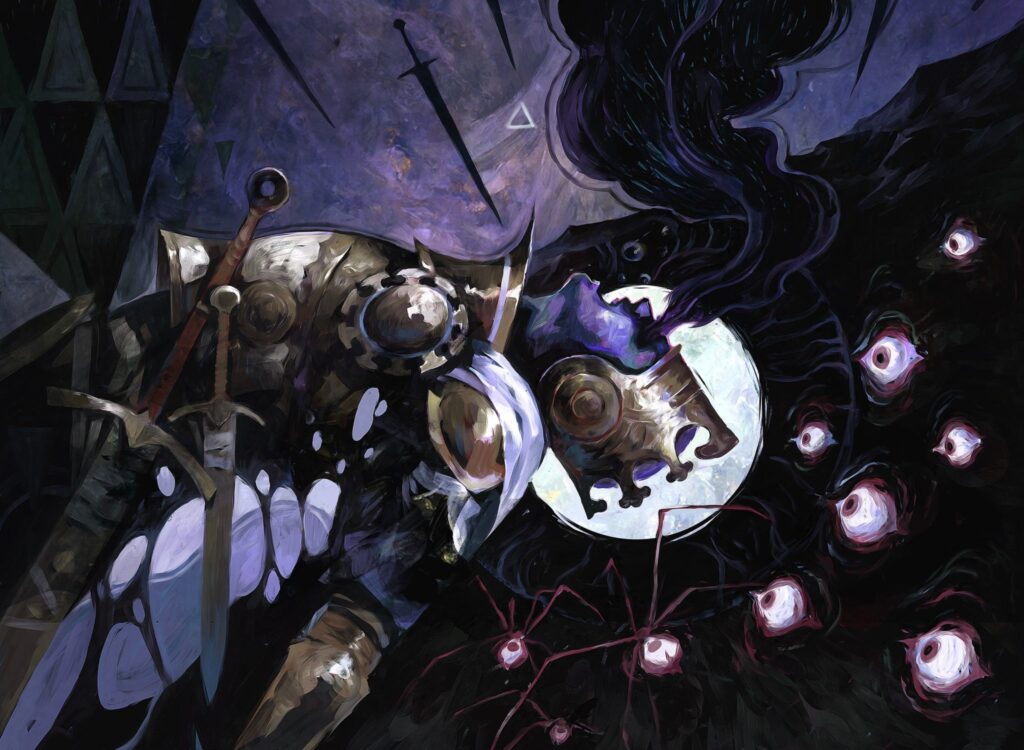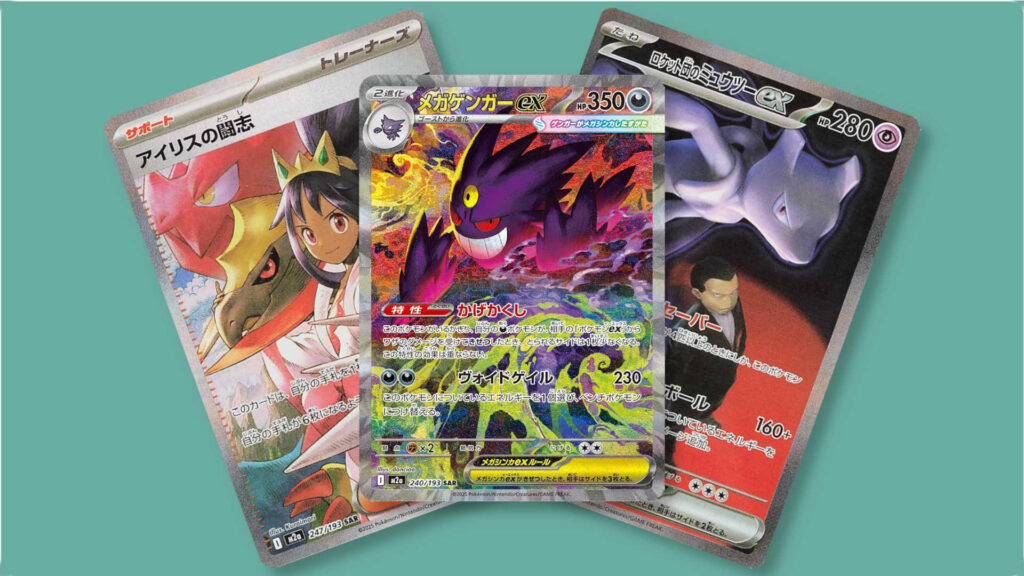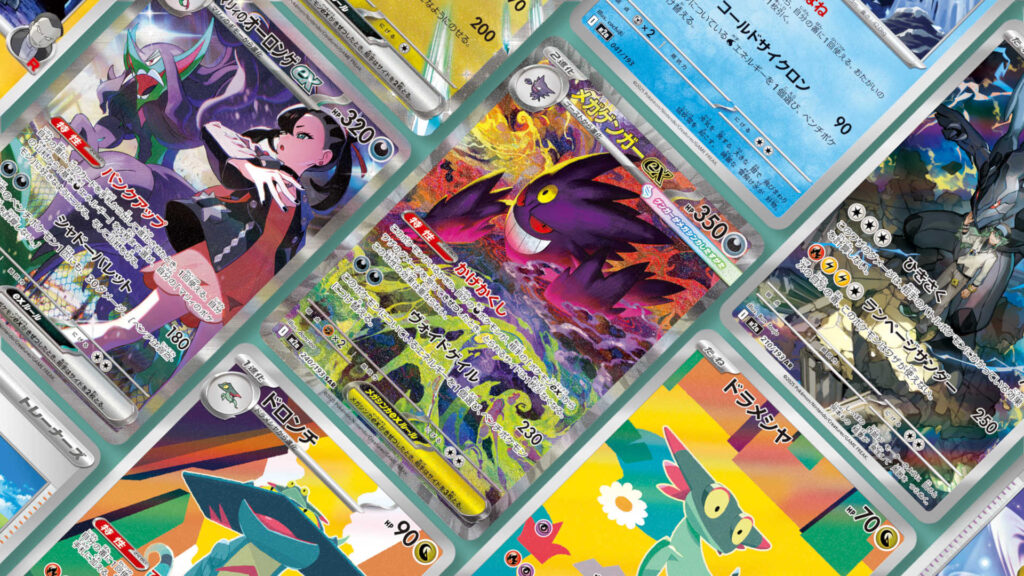Image courtesy of Wizards of the Coast
Esper Pixie has been a titan of the MTG Standard metagame for several months now, and despite referencing it frequently in my articles, I haven’t given it its own deck breakdown. Obviously, that’s changing today. This one’s long overdue, so let’s get right into it!
Table of Contents
ToggleWhat’s the Game Plan for Esper Pixie?
Esper Pixie has two main components. You have cheap permanents that accrue value, and you have ways to bounce those permanents back to your hand so you can cast them again. By replaying these permanents over and over again, you put a major strain on your opponent’s resources, often leaving them with little to no board presence or cards in hand when the strategy runs smoothly!
The Creatures of Esper Pixie
Nurturing Pixie gives this deck its name and perfectly encapsulates our game plan. When it enters, we can bounce one of our own nonland permanents to our hand and put a +1/+1 counter on the pixie. A 2/2 flyer for one mana is a great deal, and it gets even better when it effectively draws a card! You rarely want to actually play it on turn one, but it’s great on all subsequent turns!
I’m actually only running two Optimistic Scavengers right now, which is not normal for this deck archetype, but I’ve been very happy with this number. We have a ton of enchantments to trigger eerie, so there are times where you play this early and pop off. However, it can be a weak late game draw, and it’s more common for it to just eat a removal spell early (which isn’t bad.) When the Scavenger is good, it’s really good.
Our two-drops are very similar in function. Both of these cards are flyers with two power that bounce permanents back to our hand, much like the Pixie. Fear of Isolation requires you return a permanent to hand as part of its cost, which has its ups and downs. You can be caught in a tough spot if you don’t have anything good to bounce, but that’s rare. The upside is that since the bounce is part of the cost, your opponent can’t interact with the permanent you’re bouncing or stop it with a counterspell. Fear being a 2/3 means it also blocks pretty well and avoids certain removal spells like Torch the Tower without bargain.
Sunpearl Kirin, on the other hand, has flash, making it more of a surprise. The ability to save a nonland permanent from a removal spell is great, as is the ability to cash in a token for a new card. As a 2/1, it’s more vulnerable than Fear, but it’s flexible enough to earn its keep here.
Kaito, Bane of Nightmares is only a creature half of the time, but it’s arguably the best creature in the deck! His ninjitsu ability gets him on the field early while bouncing a creature back to hand (many of which can be replayed to again bounce another nonland permanent.) Once he’s down, he acts as a difficult to remove threat that generates a ton of card advantage and even shuts down other creatures! You need to play with Kaito to really appreciate how flexible this card is.
The Noncreature Permanents
Our remaining nonland cards are all permanents that do something upon entering the battlefield, giving us a great reason to bounce them and play them again. Hopeless Nightmare is one of Standard’s most infamous cards. By playing it over and over, we can discard our opponent’s hand while dealing significant damage! Seriously, don’t underestimate that extra two damage when this enters, it adds up.
We can also play Stormchaser’s Talent repeatedly to get tons of 1/1 Otter tokens with prowess. Otter tokens can hit surprisingly hard with a few prowess triggers, which are easy to get since we’re bouncing and replaying enchantments. For four mana, we can level it up and get an instant or sorcery back from our graveyard. On top of just being decent additional value, this can enable some loops that come up in longer games.
Our last two nonland permanents are removal. Nowhere to Run eats up smaller creatures and makes cards like Sheltered by Ghosts and Shardmage’s Rescue a lot worse. It’s our main removal option, since it hits a large range of targets. Momentum Breaker forces our opponents to sacrifice a creature, which gives us less control over what leaves the battlefield. That said, it can snipe larger creatures or help our discard plan when needed. The ability to sacrifice it for some additional life is nice too, even if it rarely comes up.
The Spells
We have a smattering of instants of sorceries, but by far the most important is This Town Ain’t Big Enough. Like Kaito, you need to play with this card a bit to really get a feel for what it can do. Bouncing two nonland permanents is big game, especially for two mana (assuming at least one target is one of your permanents, which is true 99% of the time.) You’ll generally be bouncing one of your enchantments and one of your opponent’s permanents to slow them down, but if you’re stabilized you can just bounce two of your permanents instead for even more value!
Next up, we have additional answers for our opponent’s threats. Spell Pierce and No More Lies are cheap counterspells. Keeping big sweepers or other game-ending threats from resolving can make or break a game. Go for the Throat is a simple removal spell. We’re only playing one copy of each of these cards, but they can also be replayed with the help of Stormchaser’s Talent.
Finally, we have Stock Up. Sometimes we just need to dig for more cards. Stock Up is one of the most efficient ways to do that in the whole format. Just try to save this for when the coast is clear. This getting countered feels bad, as does putting your shields down and immediately taking lethal damage.
The Lands
As a three color deck with fairly strict color requirements, we don’t have a lot of wiggle room in the mana base. Aside from two Meticulous Archives to surveil with, we don’t get to play any utility lands. Sequencing our lands correctly is extremely important given we have 12 fast lands. We do often want to hit four mana, but over half of our mana base comes into play tapped later on, so be wary of opening hands full of your other lands.
The Sideboard
Ghost Vacuum – Every deck needs graveyard hate in the sideboard. Most decks just settle on a pair of vacuums, but there’s an argument to be made for splitting this slot with Rest in Peace. Decks like Omniscience combo sometimes use Blast Zone to wipe out our cheap permanents, and Rest in Peace is a lot harder to remove that way. That said, Ghost Vacuum continues to be the most efficient option in the format.
Dreams of Steel and Oil/Duress – Targeted discard helps us deal with otherwise difficult cards. Duress most often comes in against control and decks like Omniscience Combo with must-answer noncreature spells. Dreams of Steel and Oil lets us permanently deal with huge reanimator threats and recursive creatures (think Atraxa, Grand Unifier or Terisian Mindbreaker). It also helps against many green decks, which will often sideboard in Obstinate Baloth or Wilt-Leaf Liege to help combat Hopeless Nightmare.
Grim Bauble – Additional removal for smaller creatures. This comes in against opposing aggro decks like Izzet Prowess and Mono-Red. This card can be good in the main deck when aggro is particularly popular.
Destroy Evil/Break the Spell – These are both enchantment removal spells, though Destroy Evil also takes care of medium/large creatures that Nowhere to Run can’t easily get. Destroy Evil can be used to cycle your own enchantments for a new card, which can be particularly useful if your opponent brings in their own enchantment removal in an attempt to slow down your value engine.
Pest Control – This card is great in the mirror, though you have to be careful to ensure your own board isn’t vulnerable to being wiped out. It also slows down Convoke decks and other decks that rely heavily on tokens.
No More Lies – We can supplement our main deck counterspells in matchups where they shine, which usually means against control and combo.
Stock Up – Again, we supplement our main deck copies against control and discard-heavy decks.
Tips and Tricks for Esper Pixie in Standard
- Hopeless Nightmare is at its best once our opponent has fewer cards in hand to discard to it. While you’ll sometimes fire it off on turn one, I’d generally prioritize Stormchaser’s Talent or Optimistic Scavenger if I can. Hopeless Nightmare is also not great in every matchup, particularly when your opponent is just too fast (Prowess and Aggro decks,) or when they want cards in the graveyard (Omniscience Combo, Reanimator, Golgari Graveyard). Don’t be afraid to cut a few copies during sideboarding against these decks!
- Hopeless Nightmare’s ability to sacrifice itself and scry does come up, but you really want it to be a last resort. We’d rather keep our hands stocked with Stock Up and our various self-bounce tools or just end the game quick enough for it to not matter. When you do use this ability, carefully consider what you need to dig for. It feels awful to sacrifice Hopeless Nightmare just to draw into a self-bounce card.
- This Town Ain’t Big Enough can be brought back to hand with the level 2 ability of Stormchaser’s Talent, which can then let you recast Stormchaser’s Talent and reuse the level 2 ability. This loop, while not particularly fast, can really help in those grindy matchups. Stormchaser’s Talent even has a level 3 ability. It’s extremely rare for this ability to matter, but you should still keep it in mind!
- In general, This Town Ain’t Big Enough is just extremely flexible and rewards strong play. Consider which of your opponent’s permanents are most important, or whether you even need to bounce them when you could just bounce two of your own permanents. Also note that bounce spells are great at answering tokens, which comes up against Cori-Steel Cutter decks quite often!
- Fear of Isolation will force you to return a land to hand as part of its casting cost if you have no other permanents, but there’s actually ways to spin that into a positive! Bouncing a tapped land can help offset the mana disadvantage and can even generate an additional mana if it lets you play a land when you otherwise couldn’t. Meticulous Archive can also be replayed for an additional surveil trigger, which can help if you need to dig for something particular.
As always, thank you so much for reading, and I’ll see you next time!
Want to read more deck breakdowns? Check out my articles on Gruul Aggro and Jeskai Oculus!




